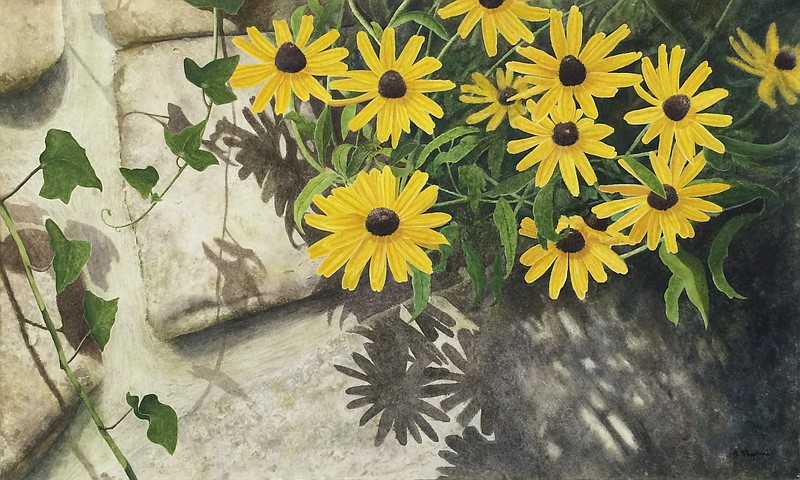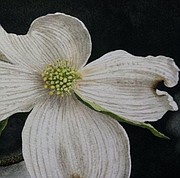It's not unusual for an artist to be visited by a muse when it is least expected. Maybe it's a ray of light through a tree or bouncing off a shimmering creek. Maybe a word on a passing bus, or overheard while in line for a movie. Sometimes, a vision while sleeping can inspire a song, a painting or a poem.
For Alan Shuptrine, an early morning dream inspired him to dedicate himself to painting a series of works based on life in the Appalachian Mountains, a decision that essentially could take the better part his remaining career to complete.
To date, the Chattanooga artist is about 10 short of his initial goal of 100 paintings and hopes to have those completed by January. Many of those completed works are part of a traveling museum collection titled "Alan Shuptrine: Appalachian Watercolors of the Serpentine Chain." Now at the Museum Center at Five Points in Cleveland, Tennessee, the exhibition is at the end of a two-year, four-museum run.
The works previously were featured at the Tennessee State Museum in Nashville, the Morris Museum of Art in Augusta, Georgia, and the Huntsville Museum of Art in Alabama.
If you go
› What: “Alan Shuptrine: Appalachian Watercolors of the Serpentine Chain.”› When: Through Jan. 17. Museum open 10 a.m.-5 p.m. Tuesday-Friday, 10 a.m.-3 p.m. Saturday (check website for special holiday hours).› Where: Museum Center at Five Points, 200 E. Inman St., Cleveland, Tenn.› Admission: $5 adults, $4 students and seniors, free for children under 5.› Phone: 423-339-5745.› Website: www.museumcenter.org.Special programming› Tuesday, Jan. 8: Student Watercolor Auction, 6-8 p.m. Live auction of watercolor paintings created by students for a competition judged by Alan Shuptrine. Free admission. Proceeds from sales to go students’ schools.› Saturday, Jan. 12: Appalachian Family Day, 10 a.m.-3 p.m. Interactive stations related to regional arts and storytelling.› Thursday, Jan. 17: Shuptrine Gallery Walk, 6-8 p.m. View the watercolors with the artist before the exhibition closes. $15 nonmembers.
"The museum concept came to me from the beginning," Shuptrine says. "I woke up at 3 a.m. with the idea, and I knew what I wanted to paint."
Shuptrine is also collaborating with Jennifer Pharr-Davis on a book, to be called "I Come From a Place," that will include his 100 paintings and her text.
Like Shuptrine, she is an avid outdoors enthusiast who has lived among the Appalachian Mountains all of her life. She holds the record for fastest supported hike on the Appalachian Trail, claiming 49 miles per day, and is a National Geographic Adventurer of the Year and an ambassador for the American Hiking Society.
Shuptrine's father, Hubert, was also a painter, so he grew up in a household full of art. His father, however, tried to dissuade him from pursuing it as a career. Early on, the younger Shuptrine spent as much of his work in the arts framing paintings as he did creating them. These days, he does more painting.
Like his father, he is fascinated by the Appalachian Mountains. The elder Shuptrine is renowned for his collaboration with poet and novelist James Dickey on the 1974 publication "Jericho: The South Beheld." The younger Shuptrine and Pharr-Davis have followed their lead for "I Come From a Place."
"On 'Jericho,' he and James Dickey refused to work together. They decided to go their separate ways. My father would paint, and Dickey would write, and then they would put them together," Shuptrine says.
Pharr-Davis has suggested some locations for Shuptrine to consider painting, and he has used them, but she has not seen his works.
"Jennifer and I worked together on a common theme, but we have not influenced each other. She did the text solely on her own, and now that I have read it, I'm glad we did it that way. It's beautiful."
Pharr-Davis says the process was liberating and fun to work with an artist. "I've done a lot of writing in the past, mostly nonfiction memoir or instructional-type stuff, so this was an opportunity as a writer to loosen up and be more artistic and fluid."
Now that she has seen most of Shuptrine's finished works, she believes the paintings and words work well together.
The title of Shuptrine's museum exhibition is derived from the vein of serpentine that runs throughout the Appalachian region. It is similar to a vein that runs through parts of Europe.
"Scientists theorize that at one point the East Coast and Europe were together and split. So, in a sense, those settlers that came here were coming home. My dad's two books were about coming home, so it's ironic that mine is too."
Where Shuptrine's works differ from his father's is that the elder painter focused on the "vanishing South," and the younger's work is more focused on the present, and perhaps the future.
"I'm not going to paint a guy with his new F150, but I wanted to paint the living Appalachian Mountains," Shuptrine says. "There are still plenty of traditions still around, from the fiddle tunes to quilt patterns to whiskey making to storytelling. I'm fascinated by it all."
Because of the Five Points museum's smaller size, the collection was scaled down to 35 paintings, Shuptrine says. Walls had to be built and lighting rigged to accommodate the exhibit. It will remain there through mid-January. The museum is planning a celebration of Appalachian Heritage Month for its final weeks. Events will include a student watercolor auction, an Appalachian family day and a gallery walk with the artist.
Shuptrine says the exhibit is a natural fit at the museum, which primarily focuses on the history of the Ocoee Region.
"They saw the significance of these beautiful paintings and also the historical component," he says.
Contact Barry Courter at bcourter@timesfreepress.com or 423-757-6354.

